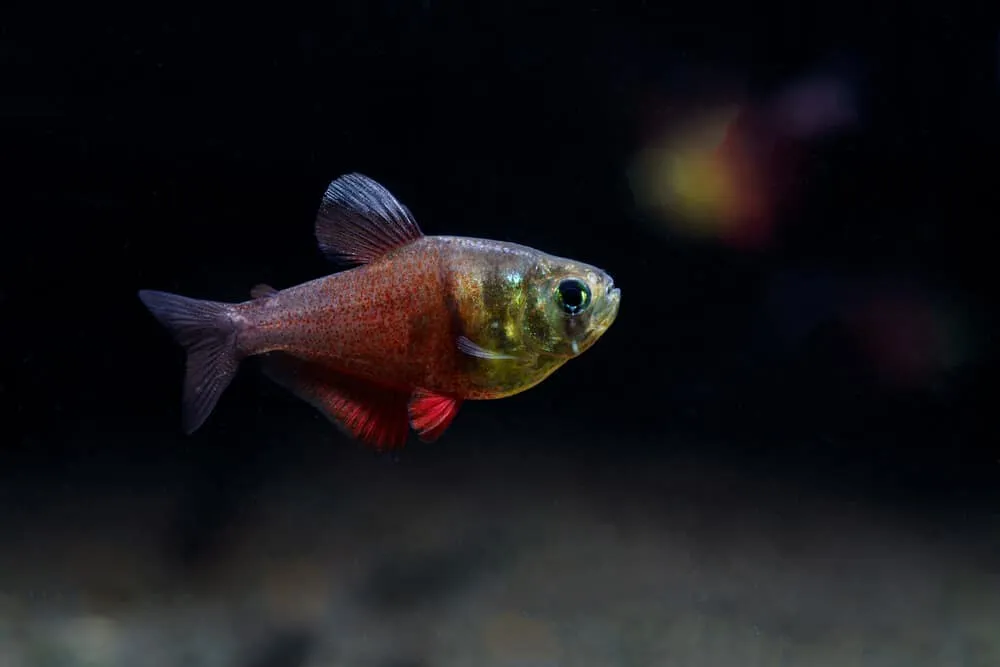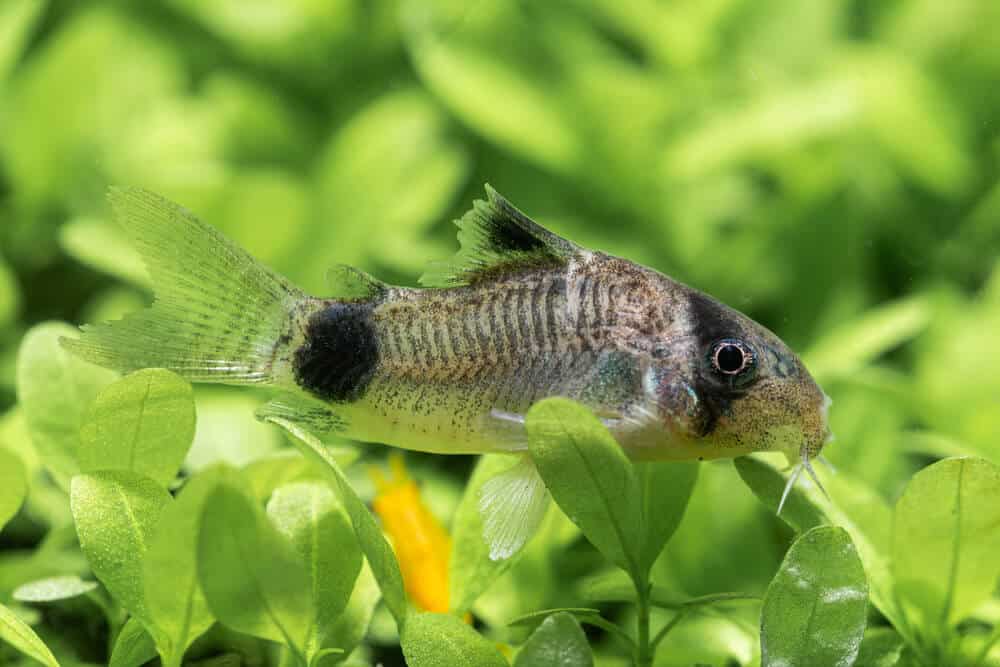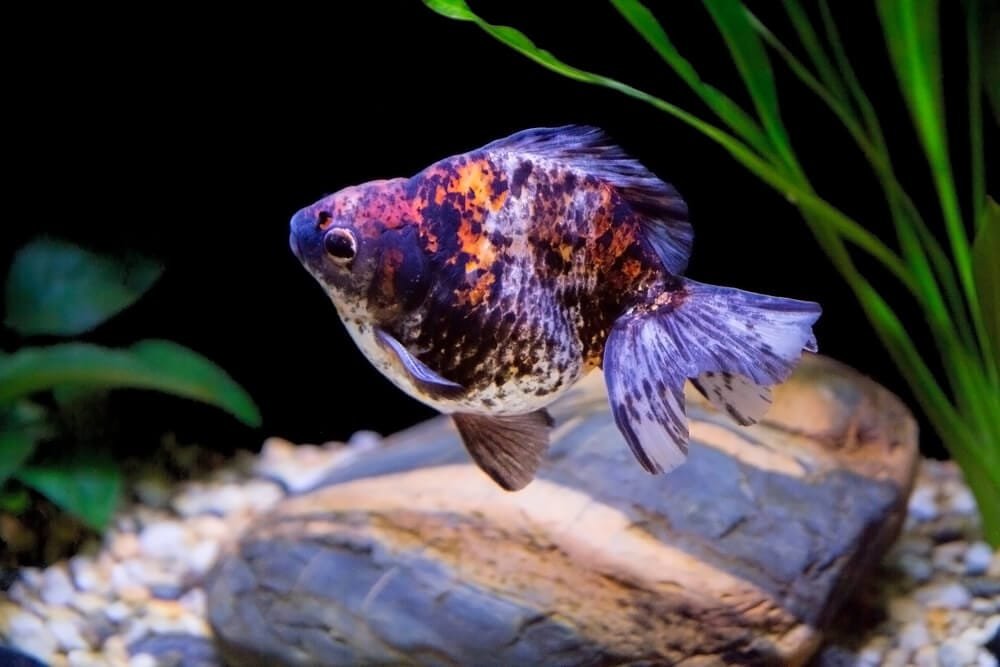How Often Should I Change The Water In A Betta Fish Tank?
In this article, we will uncover the answer to the age-old question that every Betta fish owner ponders: how often should I change the water in a Betta fish tank? As a responsible fish enthusiast, it’s important to maintain a clean and healthy environment for your Betta friend. So, let’s dive into this topic and discover the ideal frequency for water changes to keep your Betta thriving and happy.
Determining Factors for Water Change Frequency
Size of the Tank
The size of your tank plays a significant role in determining how often you should change the water. Smaller tanks tend to accumulate waste and toxins more quickly than larger tanks, so they require more frequent water changes. Conversely, larger tanks can generally go longer between water changes due to the dilution effect.
Number of Fish in the Tank
The number of fish in your tank also affects the water change frequency. More fish means more waste being produced, leading to faster water contamination. If you have a heavily stocked tank, you will need to increase the frequency of your water changes to maintain water quality and ensure the well-being of your fish.
Filtration System
The quality and efficiency of your filtration system are vital factors in determining water change frequency. A good filtration system helps remove impurities, toxins, and excess waste from the water, reducing the need for frequent water changes. However, it is important to note that even with a high-quality filtration system, regular water changes are still necessary to maintain optimal water conditions for your fish.
Water Quality Parameters
Monitoring and maintaining proper water quality parameters are crucial for the health of your fish. Factors such as ammonia levels, nitrite levels, nitrate levels, and pH levels should be regularly tested and adjusted as necessary. If these parameters are consistently out of balance, more frequent water changes may be required to restore and maintain a healthy aquatic environment.
Signs That Indicate the Need for a Water Change
Cloudy Water
Cloudy water is often a sign of high levels of suspended particles or bacteria in the tank. It can be caused by overfeeding, inadequate filtration, or the accumulation of waste. If you notice your water becoming cloudy, it is a clear indicator that a water change is necessary.
Foul Odor
A strong and unpleasant odor emanating from your tank is a definite sign that a water change is overdue. Foul smells can indicate a buildup of toxic compounds, decaying organic matter, or excessive waste in the water. Regular water changes will help eliminate these odors and create a healthier environment for your fish.
Excessive Algae Growth
While some level of algae growth is normal and even beneficial in a tank, excessive algae can indicate an underlying issue with water quality. Algae thrives in nutrient-rich environments, and an abundance of it may be a sign of high nitrate or phosphate levels. Conducting regular water changes can help reduce the accumulation of these nutrients and control algae growth.
Stressed or Unhealthy Fish
If you notice signs of stress or poor health in your fish, it may be an indication that your tank’s water quality needs attention. Sluggish behavior, loss of appetite, color fading, or visible signs of illness can be symptoms of water that is polluted or imbalanced. Regular water changes, in combination with other necessary interventions, can help improve the condition and well-being of your fish.
General Guidelines for Water Changes
Partial Water Changes
When performing water changes, it is generally recommended to do partial water changes rather than complete water replacements. Removing and replacing 25-50% of the tank’s water at a time helps maintain a stable environment for the fish while reducing stress. Draining and refilling the entire tank can disrupt the biological balance and lead to unnecessary shock to your fish.
Frequency for Small Tanks
For smaller tanks, such as a 5-gallon or 10-gallon tank, more frequent water changes are necessary due to their limited water volume. Aim to do partial water changes once every week or two to keep the water quality in check and prevent the buildup of harmful substances.
Frequency for Large Tanks
Larger tanks, such as a 20-gallon or 30-gallon tank, can generally go longer between water changes due to their larger water volume. Partial water changes once every two to four weeks are typically sufficient to maintain adequate water quality for your fish.
Cycling the Tank
When setting up a new tank or after a significant water change, it is important to cycle the tank. Cycling refers to the process of establishing and maintaining beneficial bacteria that help break down waste products in the water. This process can take several weeks, during which time regular water changes should be performed to avoid any adverse effects on the fish.
Frequency Based on Tank Size
5-Gallon Tank
For a 5-gallon tank, it is recommended to perform a partial water change of 25-50% every week. The smaller volume of water in this tank size makes it more susceptible to rapid degradation in water quality, necessitating more frequent water changes.
10-Gallon Tank
In a 10-gallon tank, partial water changes of 25-50% should be done every one to two weeks. While slightly larger than a 5-gallon tank, it is still important to maintain consistent water change frequency to ensure optimal water conditions for your fish.
20-Gallon Tank
For a 20-gallon tank, partial water changes of 25-50% should be performed every two to four weeks. The larger water volume allows for a longer interval between water changes, but regular monitoring of water quality parameters and fish behavior is still essential.
30-Gallon Tank
In a 30-gallon tank, partial water changes of 25-50% are typically sufficient every three to four weeks. The increased volume of water provides a more stable environment for the fish, reducing the need for frequent water changes. However, close observation of water parameters and fish health is still important.
Water Change Frequency with Filtration
Activated Carbon Filters
Activated carbon filters are commonly used in fish tanks to remove impurities, odors, and discoloration from the water. While these filters are effective in enhancing water quality, they do not eliminate the need for regular water changes. Activated carbon filters primarily focus on chemical filtration and may be less efficient in removing biological waste. Therefore, even with a high-quality activated carbon filter, regular water changes are still necessary to maintain optimal conditions for your fish.
Sponge Filters
Sponge filters are excellent options for smaller tanks or aquariums with delicate or slow-moving fish species. They provide biological and mechanical filtration by hosting beneficial bacteria and trapping debris. While sponge filters help maintain water quality, they may not be as effective in removing toxins or excessive nutrients. Regular partial water changes should still be performed to ensure a healthy environment for your fish.
Canister Filters
Canister filters are popular choices for larger tanks or aquariums with higher stocking levels. They offer efficient mechanical, biological, and chemical filtration capabilities. Canister filters can help maintain water quality and may reduce the frequency of water changes. However, they should not replace regular water changes entirely. It is still important to monitor water parameters and perform partial water changes to maintain optimal conditions for your fish.
Water Quality Parameters to Monitor
Ammonia Levels
Ammonia is a toxic compound produced by the breakdown of fish waste and uneaten food. High levels of ammonia can stress or even kill your fish. Regular testing of ammonia levels is crucial to catch any spikes or imbalances. The ideal ammonia concentration should be zero, and any detectable level should be addressed through proper filtration, water changes, or adjustments to feeding and maintenance routines.
Nitrite Levels
Nitrite is another harmful compound produced during the nitrogen cycle in fish tanks. It is a byproduct of beneficial bacteria breaking down ammonia. High nitrite levels can cause significant stress and harm to your fish. Regular testing is necessary to ensure the nitrite concentration remains at or near zero. If elevated levels are detected, partial water changes and adjustments to the tank’s filtration system may be required.
Nitrate Levels
Nitrates are a natural byproduct of the nitrogen cycle and are less harmful than ammonia or nitrites but can still be detrimental to fish health at high concentrations. Regular monitoring of nitrate levels is important, aiming to keep concentrations below 40 parts per million (ppm), although lower levels are ideal. Partial water changes and the introduction of live plants can help reduce and control nitrate levels.
pH Levels
pH measures the acidity or alkalinity of your tank’s water. Different fish species have different pH preferences, and maintaining a stable pH within the appropriate range is essential for their well-being. Regular testing of pH levels is crucial to detect any fluctuations or imbalances. If the pH is outside the suitable range for your fish, adjustments can be made through partial water changes, the use of pH-adjusting products, or selecting fish species compatible with your tank’s pH levels.
Water Testing and Monitoring
Test Kits
Regular testing of water parameters is vital in maintaining a healthy aquatic environment. Invest in a reliable water test kit that includes tests for ammonia, nitrite, nitrate, and pH levels. Test kits are widely available and are an essential tool for any fish owner. Ensure the test kit you choose is suitable for your tank size and the specific needs of the fish species you are keeping.
Testing Frequency
The frequency of testing depends on several factors, such as the age of the tank, the size of the tank, the number of fish, and the stability of water conditions. In general, it is recommended to test the water parameters at least once a week, especially when the tank is newly established or if any significant changes have been made. Regular testing allows you to catch and address any imbalances before they become detrimental to your fish.
Recording Results
Maintaining a record of your water test results is highly recommended. This ensures that you can track any changes or trends in your tank’s water quality over time. Recording results also helps identify patterns and potential issues that may affect the health and well-being of your fish. A simple notebook or spreadsheet can serve as a useful tool for documenting and analyzing your water test results.
Interpreting Results
Understanding and interpreting your water test results is crucial to addressing any imbalances or issues in your tank. Each water parameter has an ideal range for the specific needs of your fish species. By comparing your test results to these ideal ranges, you can determine if any adjustments need to be made. If you are unsure about the significance of certain readings, consult with a knowledgeable aquarium professional or seek guidance from experienced fishkeepers.
Behavioral and Health Observations
Eating Patterns
Monitoring the eating patterns of your fish can provide valuable insights into their overall health and well-being. Changes in appetite, refusal to eat, or excessive feeding behavior can indicate stress or underlying health issues. Healthy fish should exhibit regular feeding patterns, eagerly consuming their food during feeding times. If you notice any changes in eating patterns, it may be an indication that your tank’s water quality needs attention.
Activity Levels
Observing the activity levels of your fish is another important aspect of monitoring their well-being. Healthy fish should be active, swimming freely throughout the tank. Lethargic or sluggish behavior may indicate stress, discomfort, or poor water conditions. Pay close attention to any changes in activity levels and consider performing a water change if you notice prolonged periods of inactivity.
Physical Appearance
Regularly assessing the physical appearance of your fish is essential for early detection of any illness or health issues. Look for signs of discoloration, wounds, lesions, or any abnormal growths. Healthy fish should have vibrant colors, clear eyes, and smooth scales. If you notice any deviations from their usual appearance, it is important to investigate potential water quality problems and take appropriate action.
Finned and Tail Condition
The condition of your fish’s fins and tail can indicate the overall health of the fish and the water quality in the tank. Fin rot, fin clamping, or frayed and damaged fins are often signs of poor water conditions or bacterial infections. Regular water changes, proper filtration, and maintaining stable water parameters can help prevent these issues and promote healthy fin growth.
Advanced Techniques for Water Change
Siphoning the Tank
When performing water changes, siphoning the tank can help remove debris, uneaten food, and waste from the substrate. Use a gravel vacuum or siphon to carefully clean the gravel or substrate while removing water. This not only helps maintain water quality but also keeps the substrate clean, preventing the buildup of harmful substances and reducing the need for frequent deep cleanings.
Cleaning Decorations and Substrate
In addition to siphoning the tank, it is important to clean any decorations, plants, or ornaments in your tank to maintain a healthy environment. Use a soft brush or sponge to gently remove algae and debris from these items. If necessary, rinse them with dechlorinated water before placing them back in the tank. Regular cleaning of decorations and substrate helps prevent the accumulation of pollutants that can negatively impact water quality.
Adding Conditioner and Supplements
During water changes, it is important to add a water conditioner to remove chlorine and chloramines from the tap water. These chemicals can be harmful to fish and can disrupt the delicate balance of the aquarium. Additionally, consider adding supplements such as beneficial bacteria or trace elements to enhance water quality and support the overall health of your fish.
Avoiding Stress during Water Changes
Gradual Water Change
To minimize stress on your fish during water changes, it is best to perform gradual water changes rather than sudden, drastic changes. Aim to match the temperature and pH of the new water with that of the tank before adding it in. Slowly adding the new water over a period of time, rather than all at once, allows the fish to adjust more comfortably.
Maintaining Consistent Temperature
Sudden temperature fluctuations can cause stress and harm to fish. To maintain a consistent temperature during water changes, make sure the new water is at the same temperature as the tank water before adding it in. Using a thermometer to measure the temperature will help ensure a smooth transition and minimize stress on your fish.
Safe Handling of Fish
When conducting water changes, it is important to handle your fish with care to avoid injury or stress. Use a fish net or cup specifically designed for aquarium use to gently capture and move your fish. Avoid squeezing or applying excessive pressure to the fish, as this can damage their delicate fins or internal organs. Handle them as little as possible and return them to the tank promptly to minimize stress.
Minimizing Light and Noise
Fish are sensitive to sudden changes in light and noise. During water changes, it is beneficial to minimize any disruptions that could cause stress to your fish. Dimming the lights in the room and maintaining a quiet environment can help create a more peaceful and stress-free experience for your fish.
In conclusion, the frequency of water changes in your Betta fish tank depends on various factors such as tank size, the number of fish, filtration system, and water quality parameters. Regular monitoring of water quality, behavior, and health observations is essential to determine the appropriate water change frequency for your specific setup. By following general guidelines, testing water parameters regularly, and implementing advanced techniques, you can ensure a clean, healthy, and thriving environment for your Betta fish. Remember, happy fish require clean water!






